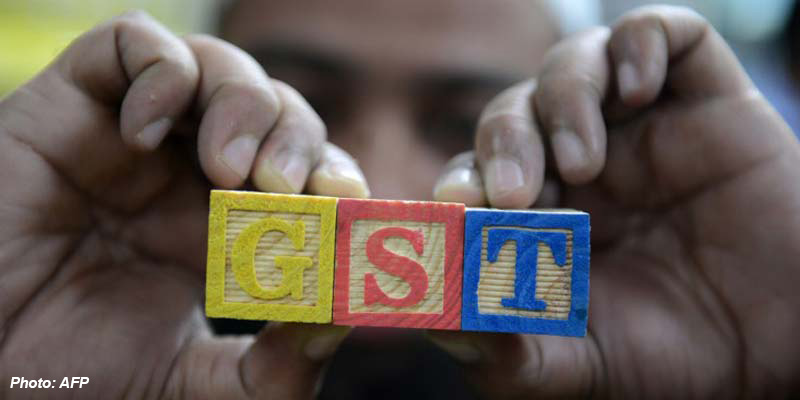- India
- Nov 04
GST collections rise to Rs 1.96 lakh crore in October
• Gross Goods and Services Tax (GST) mop-up in October was about Rs 1.96 lakh crore, the Finance Ministry said.
• It registered a 4.6 per cent higher growth over Rs 1.87 lakh crore collection in October 2024.
• Maharashtra, Karnataka, Gujarat, Tamil Nadu, and Haryana together contributed over 40 per cent of the total GST revenue, underscoring their role as major consumption and production hubs.
• In August and September this year, GST collection grew at 6.5 per cent to Rs 1.86 lakh crore and at 9.1 per cent to Rs 1.89 lakh crore, respectively.
What is Goods and Services Tax (GST)?
• The introduction of the Goods and Services Tax (GST) regime in the country was a very significant step in the field of indirect tax reforms in India. By amalgamating a large number of central and state taxes into a single tax, the aim was to mitigate cascading or double taxation in a major way and pave the way for a common national market.
• Before implementation of the GST regime in the country, the issue was deliberated in detail by the empowered committee of state finance ministers, select committee of Rajya Sabha and Parliamentary Standing Committee on Finance.
• After detailed and prolonged deliberation, the Constitution (One Hundred and First Amendment) Act, after ratification by 50 per cent of the states, was assented to by the President on September 8, 2016.
• Thereafter, Central Goods and Services Tax (CGST) Act, Integrated Goods and Services Tax (IGST) Act, Union Territory Goods and Services Tax (UTGST) Act, and Goods and Services Tax (Compensation to States) Act were enacted in order to achieve a successful rollout of the GST regime in the country from July 1, 2017.
• With GST, India took a quantum leap towards the goal of establishing ‘one nation, one market’ by dismantling multiple taxes and unifying them into a single tax.
• When it was launched, there were four GST slabs of 5 per cent, 12 per cent, 18 per cent and 28 per cent.
• With newly introduced reforms, the GST now has a two-tier structure, wherein the majority of goods and services will attract tax of 5 and 18 per cent.
• A 40 per cent tax is levied on ultra luxury items while tobacco and related products continue to be in the 28 per cent plus cess category.
GST Council
• Goods and Services Tax Council is a constitutional body for making recommendations to the Union and state government on issues related to GST.
Composition:
• The chairperson of the GST Council is the Union Finance Minister.
• A member of the GST Council includes the Union Minister of State in charge of revenue or finance.
• Each state government nominates a minister responsible for finance or taxation, or another designated minister, as a member of the GST Council.
• The role of vice-chairperson rotates among the state representatives.
• The chairperson of the Central Board of Excise and Customs (CBEC) attends as a permanent invitee to the GST Council but without voting rights.
• The secretary of the revenue department serves as the ex-officio secretary to the GST Council.
Powers of GST Council:
• A GST Council meeting requires at least 50 per cent of its total members to be present for decisions to be valid.
• Decisions of the GST Council are based on a majority of not less than three-fourths of the weighted votes of members present and voting.
• The central government holds one-third of the total votes, while states collectively have two-thirds weightage in voting.
Functions of GST Council:
• The GST Council determines which taxes, cesses, and surcharges are to be subsumed under GST.
• It decides on the goods and services to be taxed under GST and those exempted from GST.
• The council formulates GST laws and principles for levying and distributing GST on interstate trade.
• During natural disasters, the council may levy special rates or additional resources through GST for relief efforts.
• The council sets turnover thresholds below which businesses are exempted from GST.
• It decides on GST rates, including setting a floor rate and establishing rate bands.
• The council considers and implements special GST provisions for states like Arunachal Pradesh, Assam, Jammu & Kashmir, Manipur, Meghalaya, Mizoram, Nagaland, Sikkim, Tripura, Himachal Pradesh, and Uttarakhand.
Significance of GST Council:
• Decisions made by the GST Council are based on consensus among all participating states and the central government.
• It reinforces federal principles by involving states in decision-making on tax matters.
• The council addresses emerging challenges and issues related to GST implementation.
• It oversees IT readiness, conducts consultations, workshops, and training for stakeholders involved in GST implementation.

